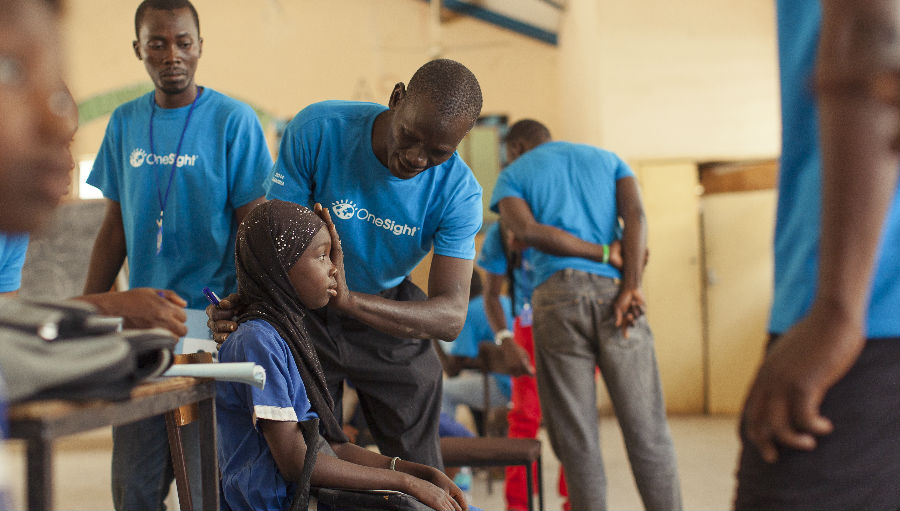Join a powerful, unprecedented alliance for better eye health for all.
Join IAPB-
Choose an alternate language here

On October 8th, 2019 at 7:30 AM, OneSight will be hosting an event at IAPB’s Council of Members to highlight our partnership with The Gambia to create a vision care system for the whole country. If you are attending the Council meeting and would like to know more, see the programme here.
In 2013, OneSight embarked on a journey with The Gambia to create a long-term solution to closing the vision care gap that existed there. What is the vision care gap? It’s our shorthand for referring to the problem that exists for approximately 1.1 billion people worldwide: they need a pair of glasses but have no way to get them. Closing that gap is our passion, our mission, and our guiding principle.
The vision care gap looks different depending on where you look. In The Gambia in 2013, it looked like this: a single optometrist to serve the entire population of 1.8 million people. Over the course of the next six years, we partnered with The Gambian Ministry of Health to create a solution to make access to refractive error services available for all of their citizens.
In June of 2019, OneSight and the Ministry of Health in The Gambia signed a Memorandum of Understanding transferring the ongoing operation of the 7 centers to The Gambia. This is a central part of our model: partnering to create the capability and capacity for ongoing, sustainable vision care, then transitioning to local ownership. That removes dependence on an outside entity like OneSight, but allows us to maintain a relationship, consulting and offering advice as needed.
It also allows the expertise to grow and expand regionally as well. In recent years, lab managers from The Gambia have been instrumental in helping neighboring countries who are also implementing this sustainable model for vision care. It’s why we believe so strongly in creating local ownership and commitment to long-term success.
There is no one-size-fits-all approach to creating long-term vision care systems. What works in one country or region may need to be adjusted in a different setting. Building a network of partnerships, solutions and experts help us maintain a dynamic, adaptable approach that can work in many different settings. As we see it, that’s the way forward to close the vision care gap for good.